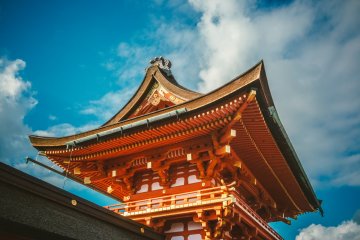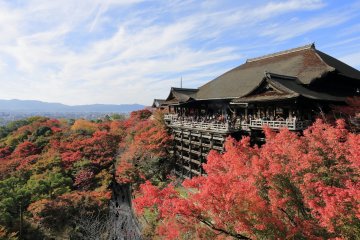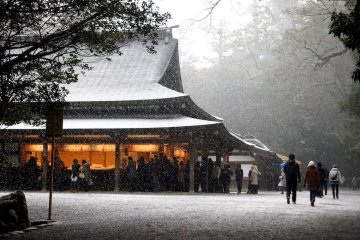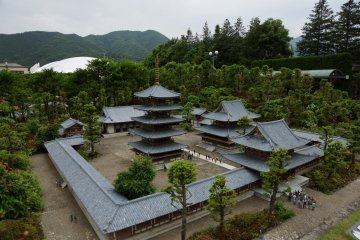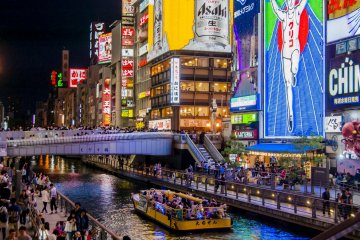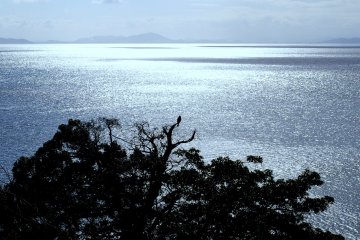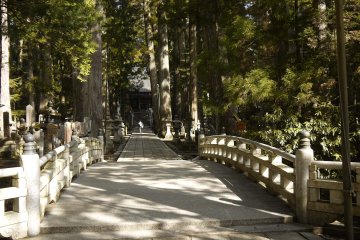Overview
Combining an aristocratic pedigree with spiritual longing and a thirst for modern living is no easy task, yet the Kansai region of Japan manages to do it. Its seven prefectures are home to some of the country's most iconic and popular destinations each with decidedly memorable personalities. Internationally recognised temples and shrines work within a beautiful nature and unique local cultures in a way that is open to the world. Here is a simple guide to each of the seven prefectures of Kansai.
Hyogo
Hyogo Prefecture is a hub of cosmopolitan culture, business and history. Its major port, Kobe, fuses together Japanese and international modernity with a renowned Chinatown and the Meiji era Western-style homes of Kitano . Arima Onsen is world class, the lavish all-female Takarazuka Theatre jostles for attention with the World Heritage-listed Himeji Castle and mountainside ruins of Takeda Castle, while Mt. Maya's Kikuseidai sits as one of the top three night views in the country.
Hyogo is connected to Tokyo via the JR Tokaido Shinkansen to Shin-Osaka and from there the JR Sanyo Shinkansen.

Kyoto
Japan's capital for over one thousand years, the city prefecture of Kyoto is an endless discovery of high-end culture, sophisticated craftsmanship and aristocratic heritage. Fushimi Inari Shrine, Kiyomizu-dera and Kinkaku-ji are only a small fraction of Kyoto's world recognised sites with even its kaiseki cuisine UNESCO-listed. Drawn together through a subtle sense of beauty is the pine-covered sandbar of Amanohashidate, one of Japan's three scenic views, and the surreal exoticism of the geisha district, Gion.
Kyoto is connected to Tokyo via the JR Tokaido Shinkansen as well Haneda and Narita Airports.

Mie
With its long coastline and rugged mountain interior, Mie Prefecture is a natural location for Japan's holiest Shinto site, Ise-jingu Shrine. The prefecture's spiritual heritage, confirmed with the World Heritage-listed Kumano Kodo pilgrimage site, is balanced with its history in war through the impressive Iga Ueno castle and the clandestine art of the ninja that found its fame in the mountains here. Mie's Matsusaka beef is one of the nation's top three brands while the Ama diving culture is an extraordinary local legacy.
Mie is connected to Tokyo via JR Tokaido Shinkansen to Nagoya and from there the Kintetsu Limited Express.

Nara
If any place in Japan has history, it is Nara Prefecture. The nation's first real capital, Nara has the most UNESCO World Heritage-listed sites in the country. Todai-ji Temple is home to the world's largest bronze Buddha statue, Horyu-ji Temple is the world's oldest wooden building while the deer's of Nara Park share their home with the incredible Kasuga Taisha shrine. Along with history lies the stunningly beautiful foliage of Mt. Yoshino.
Nara is connected to Tokyo via the JR Tokaido Shinkansen to Kyoto and then from there the JR Nara Rapid Line.

Osaka
With a personality matched only by its energy, the metropolitan prefecture of Osaka is Japan's home of comedy, street food and nightlife. Even with the historical landmark of Osaka Castle and the ever popular Universal Studios, the city-prefecture thrives on modernity and in-the-moment living. Its Dotonbori district is an iconic location for Japan's best street food while Namba has some of the liveliest nightlife in the nation.
Osaka is connected to Tokyo via the JR Tokaido Shinkansen.

Shiga
The land of postcard views, over a third of Shiga Prefecture is listed as a Natural Park. Its Lake Biwa is the largest lake in Japan and features prominently in classical literature. This literary heritage extends to Otsu's Ishiyama Temple where it is believed that the world's first novel, The Tale of Genji, was written. Shiga's comfortably rural ambience is also home to the UNESCO recognised Enryaku-ji Temple, the National Treasure that is Hikone Castle and the stealthy Ninja Village of Koka city.
Shiga is connected to Tokyo via the JR Tokaido Shinkansen.

Wakayama
The spiritual heart of the nation, Wakayama Prefecture is home to Mount Koya, one Japan's most sacred sites as well as the UNESCO-recognised Kumano Kodo pilgrimage trail. The Three Grand Shrines of Kumano Sanzan beat with spiritual authenticity while the largest cemetery in the country, Okuno-in, is the great monk Kukai's final resting place. The 'Land of the Gods,' it may be but Wakayama is also home to the gorgeous Shirahama Beach, and the traditional lacquer craft of Kuroe Town.
Wakayama is connected to Tokyo via the JR Tokaido Shinkansen to Shin-Osaka and from there the JR West Hanwa Line.








